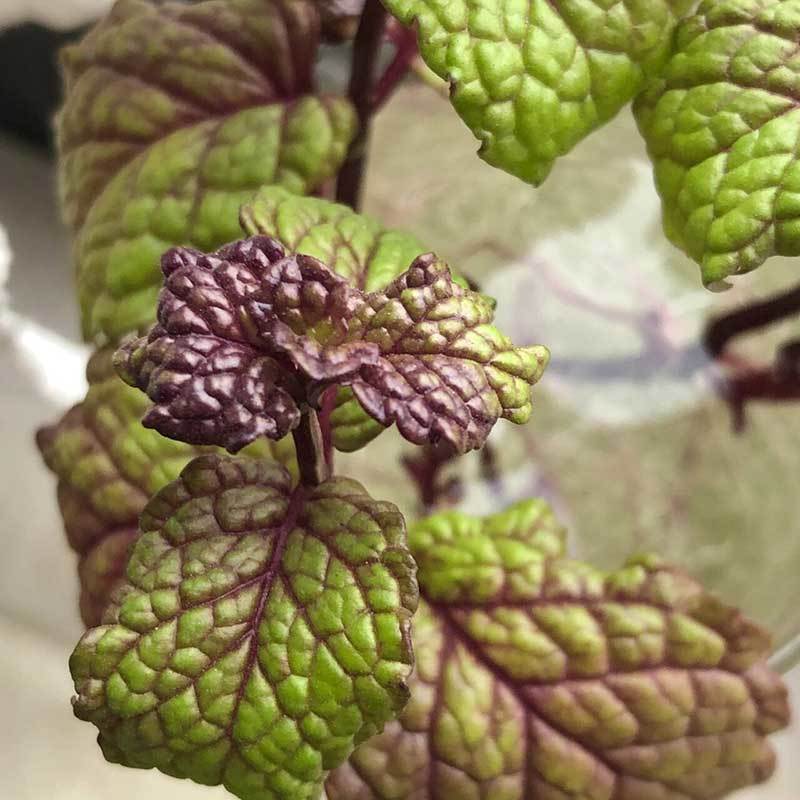Mint Leaves Turning Purple: Causes and Solutions
Introduction
Oh my God! Why is my mint plant turning purple? You may be confused. We will explore the various reasons behind this change.
Why Is My Mint Turning Purple?
Temperature Fluctuations
Sudden drops in temperature can lead to mint purple leaves. Because the plant reacts to cold stress. If your garden encounters frost or quick temperature changes, it could lead to anthocyanins production in the leaves. These pigments are beneficial to the plant's resilience against the cold. But they might alter the familiar green you're used to.
Sunlight Exposure
The amount of sunlight may be the cause of its purple coloration. If you place it in a location with too little light, your mint plant may start to produce more anthocyanins. This can lead to mint leaves turning purple. Being exposed to too much direct sunlight may also cause mint to turn purple. This is a sunburn protective measure.
Soil pH Levels
Any significant deviation can cause trouble. Acidic soils might indicate unwelcome aluminum levels, triggering purple pigmentation. Conversely, high alkalinity could restrict the iron uptake. It is a crucial component for chlorophyll production. This can result in mint purple leaves.
Nutrient Deficiencies
Shortages in nutrients can lead to mint turning purple. Phosphorus deficiency can lead to stunted growth and mint purple leaves. Because it is key for energy transfer in plants. The plants won't make sufficient chlorophyll without nitrogen. This may result in mint leaves turning purple.
Common Pests
Identify common culprits like aphids or spider mites, which can cause stress to mint plants. These tiny creatures can suck sap from the leaves. This leads to stunted growth and potentially manifesting as purple.
Common Diseases
Fungal infections or bacterial diseases can also cause purple mint leaves. Common issues like powdery mildew can lead to decreased photosynthesis. Because the leaves' surface area is compromised. This can cause them to turn purple or brown.
Diagnosing Purple Mint Leaves
Visual Inspection
Begin by examining the plant as a whole. Is the purple discoloration affecting the entire plant or just some leaves? Are the stems also changing color?
Pay close attention to the soil. Is it damp or dry? What's the pH level? Are there pests in the vicinity, or has there been exposure to any new environmental stressors? For example, recent temperature fluctuations or changes in light.
Identifying Symptoms
Purple leaves can be a standalone symptom. They can also occur alongside other problems. Common additional symptoms include wilting, yellowing, curling, stunted growth, or spotting on the leaves.

Solutions and Remedies
Temperature Regulation
Mint is a hardy perennial. It generally prefers cool temperatures. However, extreme cold can trigger the purple response in some varieties.
Mint plant turning purple reacting to chillier nights or cold snaps. You should consider providing a temporary cover. You can also move potted mints indoors during unusually cold periods.
Sunlight Management
Mint prefer sunshine. But it can suffer from scorching with too much direct sunlight. So you should provide some shade during the hottest parts of the day. This is especially important if you transplant your plants recently.
Soil Amendments
Mint typically prefers slightly acidic soil with a pH 6-7. Use a simple soil testing kit to determine your soil pH. Consider adding an organic fertilizer high in phosphorus if the result reveals a deficiency. This encourages healthy green growth. Avoid using synthetic fertilizers. They can contribute to soil imbalances over time.
Excessive amounts of certain metals can prevent the uptake of essential nutrients in the plant. For example, aluminum. If you suspect this is the cause, consider planting mint in a raised bed with healthy, amended soil.
Pest and Disease Management
Companion Plants: Companion planting with species which can attract beneficial insects. Certain plants are aromatic and can repel pests. For example, marigolds and chives. They also enhance the soil quality with their root exudates.
Natural Remedies: Prevention can be the most effective tool against pests and diseases. Proper spacing, good air circulation, and removing any diseased plant materials can help keep mint plants healthy.
Chemical Treatments: If pests become too numerous or a disease takes hold, you may need to consider chemical treatments. However, they should be a last resort. These potential impact on beneficial insects and the surrounding environment. Always follow the instructions carefully. Consider organic or less invasive products first.
Routine maintenance
Pruning to encourage air circulation. Regular removal of debris. The application of insecticidal soaps or natural repellents can keep your mint plants pest-free. In the case of an infestation, isolating the affected plants and using targeted treatments.
Conclusion
Why are my mint leaves turning purple? Monitor your mint's health, employ preventive measures. With some prudent adjustments, your mint should soon be back to its refreshing green.

